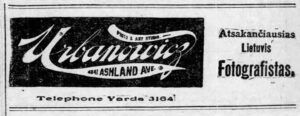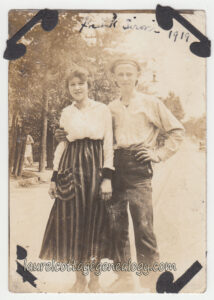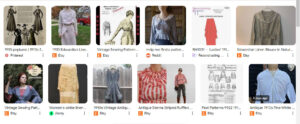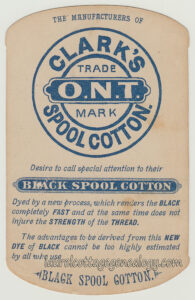Zacharias K. Urbanowicz (1873 – 1962) Chicago, Illinois photographer from at least 1910 – 1940. See the prior post for an early example of his work. The following is a rough time-line from online records:
1890 – Zacharias Urbanowicz. Departure from Hamburg, Deutschland (Germany) May 30, 1890. Ship name, Scandia. Age 18. Arrival New York, U.S.A. June 10, 1890.
1896 – Became a naturalized U. S. citizen in 1896 according to the 1920 census.
1900 – Federal Census not found.
1910 – Federal Census. Zacharias K. Urbanowicz. 4841 S. Ashland Ave. Proprietor of photo studio. Living with stepfather, John Zilgiewicz and mother, Domcoly[?]. Also in household are boarders, Joseph Kozlowski and Gabriel[?] Torozynski[?], both are photographers working from a studio, most likely working with Urbanowicz. All are listed to be native Russian-Lithuanian. (Later records show Poland for Zacharias.)
July 14, 1910 to February 8, 1912 – An ad that ran multiple times, showing Urbanowicz’s Photo and Art Studio, 4841 Ashland Ave. It appeared in the newspaper, Katalikas. The wording at the right translates, per Google.com, as: “The most responsible Lithuanian.”

Early June 1912 – The approximate date of the photographer’s move to 4852 S. Ashland Ave. The following ad appeared in the Dziennik Chicagoski (Chicago Journal), June 7, 1912, in which he informed the public that the new building had the best lighting, having been designed specifically for photography; and that he did portraits, group shots, photo enlargement, medallions and buttons with photos, and also offered work in oil, crayon and pastels:

November 2, 1912 – By this date, the photographer, Wladyslaw J. Norozny was at Urbanowicz’s old studio address of 4841 S. Ashland, per his ad in the Dziennik Chicagoski.
1920 – Federal Census. Zachary Urbanowicz, address 4852 S. Ashland Ave., Chicago. Photographer (own account). Living with him are his mother and stepfather. All three on this record show born in Poland.
1921 – approximate year of marriage to Veronica Mackiewicz, from the 1930 census.
1922 – The following was a large ad appearing in the Lithuanian newspaper, Draugas, showing Z. K. Urbanowicz and M. Zalgewicze, partners in the photography business at 4852 S. Ashland Ave:

Translated from Google and with the help of Wikipedia:
“City by the lake for Lithuanians. Specialists – photographers. We photograph groups, weddings, funerals, and just about any individual. Since tomorrow is the children’s first communion, the prices are greatly reduced. We perform the work quickly and responsibly. Owners Z. K. Urbanowicz & M. Zalgewicze.”
1930 – Federal Census. Zachary Urbanowicz. Address 8907 Commercial Ave., Chicago. Photographer (own account). With him on this record are his stepfather and mother. Also at same address are a Leo and Irene Dudeck and son, Richard and a Chester Urbanowicz, photographer (own account).
1940 – Federal Census. Zachary Urbanowicz. Address 8907 Commercial Ave., Chicago. Shoe salesman. Zachary and wife, Veronica are living with Veronica’s daughter from her first marriage, Leona. Also at this address (renting) are Leo Dudeck and family and Chester Urbanowicz and wife, Betty. Chester is listed as photographer (own account) at studio.
1964 – Zachary Urbanowicz died February 28, 1964, age 92. See the Find A Grave link in Sources, below, which contains his obituary showing Chester, Leone and Irene are step-children.
______________________________________________________________________
Sources: Staatsarchiv Hamburg; Hamburg, Deutschland; Hamburger Passagierlisten; Volume: 373-7 I, VIII A 1 Band 067 B; Page: 523; Microfilm No.: K_1741. (Ancestry.com).
United States Government. 1890 New York Ship’s Arrivals Records Index (Rolls #543-#560, Jan. 2, 1890 to Dec. 30, 1890). Washington, D.C.: National Archives and Records Administration. (Ancestry.com).
Year: 1910; Census Place: Chicago Ward 29, Cook, Illinois; Roll: T624_275; Page: 11a; Enumeration District: 1570; FHL microfilm: 1374288. (Ancestry.com).
Urbanowicz ad at 4841 Ashland. Katalikas (Chicago, IL), January 4, 1912. Thursday, p. 11. (Newspapers.com).
“Wielki Pierwszorzedny Polski Zaklad Fotograficzny.” (A Large, First-Class Polish Photography Studio). Dziennik Chicagoski, June 7, 1912. Friday, p. 12. (Newspapers.com).
“Wladyslaw J. Narozny.” Dziennik Chicagoski, November 2, 1912. Saturday, p. 2. (Newspapers.com).
Association News (Photographer’s Association of America),Vol. 3, No. 8, September 1916, p. 342. (Google.com book search).
Year: 1920; Census Place: Chicago Ward 29, Cook (Chicago), Illinois; Roll: T625_345; Page: 11A; Enumeration District: 1760. (Ancestry.com).
Year: 1930; Census Place: Chicago, Cook, Illinois; Page: 32A; Enumeration District: 2456; FHL microfilm: 2340167. (Ancestry.com).
Year: 1940; Census Place: Chicago, Cook, Illinois; Roll: m-t0627-00941; Page: 61B; Enumeration District: 103-658. (Ancestry.com).
Find a Grave, database and images (https://www.findagrave.com/memorial/256539063/zachary-urbanowicz: accessed February 9, 2024), memorial page for Zachary Urbanowicz (–), Find a Grave Memorial ID 256539063, citing Saint Casimir Catholic Cemetery, Chicago, Cook County, Illinois, USA; Maintained by Bruce Weirauch (contributor 47898263).






















